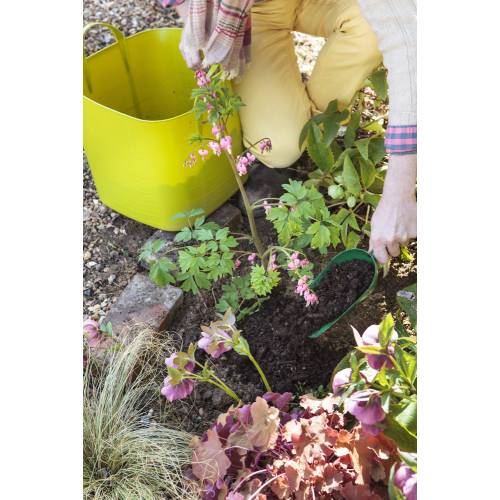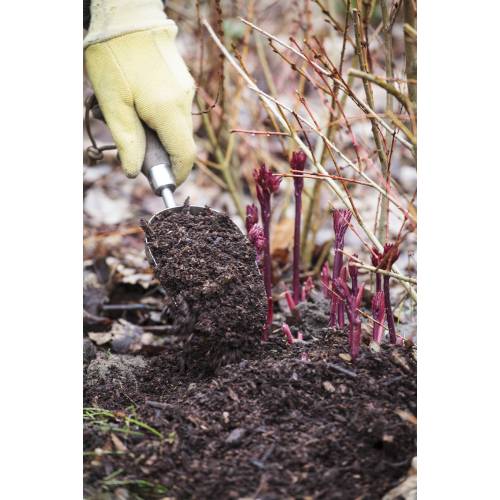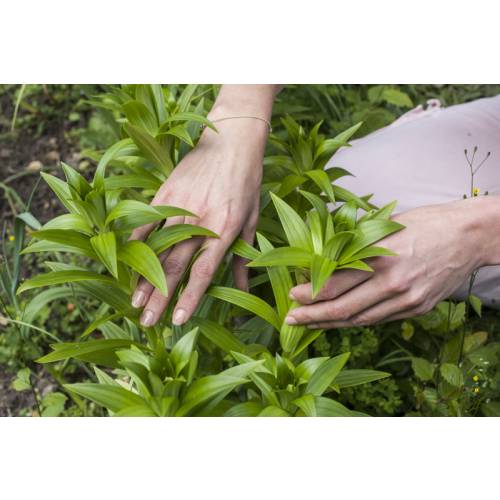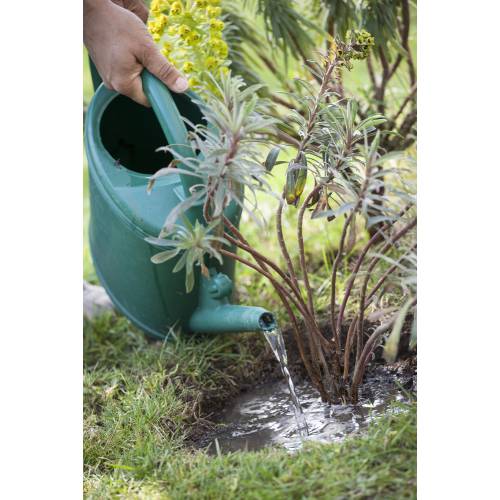
Nourish your plants
Encourage perennial plants in the spring
- Details
-
They come back year after year but a few minutes of care will make them even more beautiful and last even longer.
Nourish them at their base
Bring in some compost to the tuft when they come back into life to encourage them, even when grown in pots. Wait for the stems to get to at least to10cm in height. Place a good shovelful at their base taking care of not burying the tuft. For lack of compost, multipurpose potting mix is also beneficial especially in clay soil. In chalky soil, this action helps plants which prefer acid or non-calcareous soils (Roses, Glycine, Lupins…). This removes the need to use a product to fight chlorosis.
Some rather greedy perennials such as Hemerocallis (Day Lilies), Hosta (Plaintain Lilies) or Hibiscus prefer a slow release fertiliser, buried 5cm deep. Others, on the contrary fear any fertilisation such as Iris and Stonecrops (Sedums).
Tidy up the dead flowers
As often and regularly as possible, clean the stems which have withered, particularly the Iris, Hemerocallis, Peonies, bulbous spring-flowering plants, Daisies, etc. Cut out the dead flowers at the peduncle which supports them, without removing the foliage (only the shrubs withstands to have their dead flowers removed with a few leaves, placed on the stem below the dead flower). Do not constrain yourself to clean out the small flowering plants (dwarf Daisies for example). A. cleaning out is only of interest for large flowers, as it makes the plant look tidy and encourages them to blossom again when possible.
Keep an eye for plant bugs
Inspect the foliage looking for plants' bugs like the Lili leaf Beetle on Lilies (small, red chrysomelidae beetle who nibbles the stems). All insect found on a plant is not necessarily an enemy: Only act if you are sure that it is a bug! Look out for slugs and snails at the base of perennials which have thick foliage (Hostas, Hemerocallis (Day Lily), Kniphofia (Red Hot Poker)…If you notice slugs' attacks without finding the culprits, spread some ferric -phosphate (ecological anti-slugs).
After blossom, encourage growth
When the clump of the perennial plant has finished blossoming, it starts preparing its reserves for the following year (or the next blossom if it flowers again during the year). Therefore, it is the right time to give it a little help to ensure an even better blossom next time. Some compost, a potting mixture or the right dose of fertiliser (specific for flowering plants) will be beneficial to the plant. Firstly, check that the plant is not thirsty. Water the base of the plants when the soil is dry: In the heat of the summer, this kind of care is worth more than giving even the best fertiliser in the world! For example, the Agapanthus (African Lily) flowers better if it is watered after blossom, and this even in poor soil... - Photos (5)





